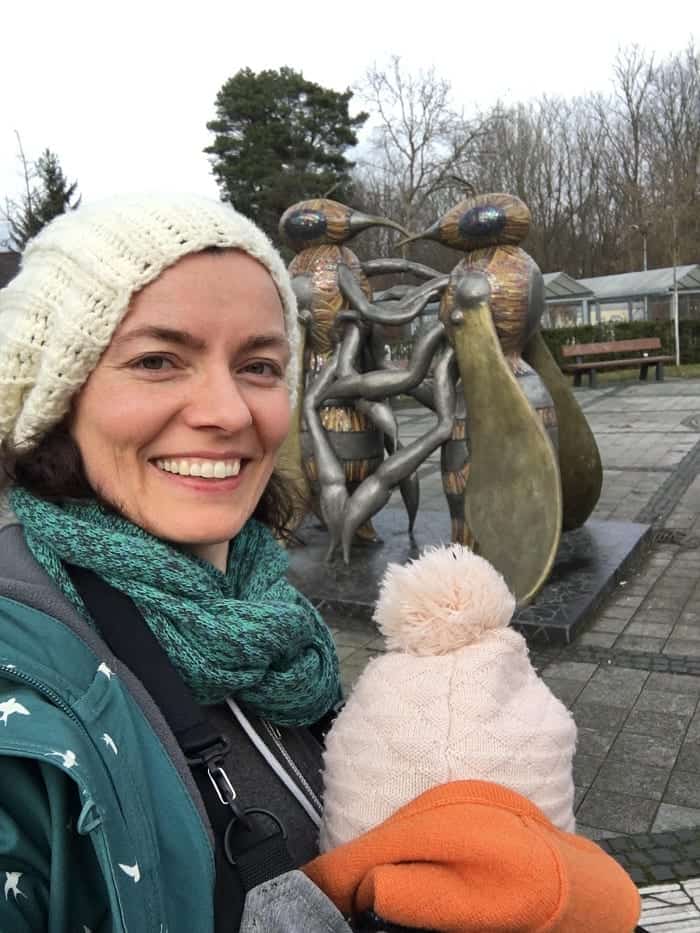This post covers how to visit Tempelhof Airport in Berlin, including guided tours and a tour highlights section.
We also include ideas for things to do before and after your visit.
- History and Overview
- Plan Your Visit
- Guided Tours
- Tour Highlights
- WW2 Sights of Berlin
- Free Tours in Berlin
HISTORY AND OVERVIEW
Tempelhof Airport is a retired airport (closed in 2008) that lies close to Berlin's city center.
Today, the airport is a recreation center and its terminal and its other buildings are used for offices, event space, guided tours, and as housing for refugees.
Tempelhof derives its name from the Knights Templar, who owned the land claimed by the airport today.
The Prussian kings and eventually the German Kaisers used the land as military parade grounds, something the Nazis had planned on also doing.
Its earliest associations with aviation were in 1909, when among others, Orville Wright, conducted demonstration flights here.

Twenty years later, the first Tempelhof Airport was created.
However, the building that exists today owes its creation to the Nazi government.
They built the airport to serve as the grand gateway to Germania, the planned new German capital city.
Strangely enough, the Nazis would not use the airport for flights during WW2. Rather, the airport's buildings served as weapons and munitions factories.
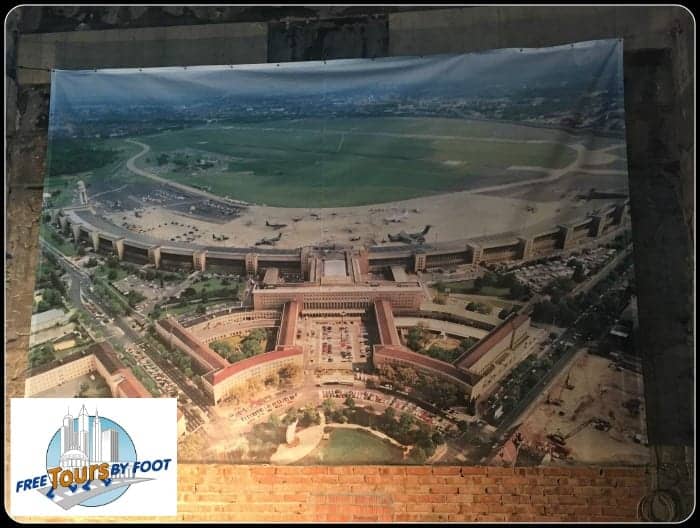
During the Cold War, the airport served both civilian and military aircraft, with both the U.S. Air Force and Army Air Corp stationed here, and it was here that the planes that carried out the Berlin Airlift from 1948 - 1949 landed and departed.
This post is about what you will see on a guided tour. There are options in German and English.
We also present ideas for other activities that you could pair with your tour, such as places to eat.
Due to its connection to both WW2 and the Cold War, Tempelhof Airport is one of the stops on our Cold War and Third Reich Berlin self-guided tours.
PLAN YOUR VISIT
In this section, we detail how to get here and how to plan your day, especially if you are coming to take an English tour.
Tours last 2 hours. Expect to spend between 2-3 hours, especially if you plan on visiting the open field and/or the Berlin Airlift Memorial (Luftbruckedenkmal).

HOW TO GET HERE
The tours begin from the GAT Terminal Tempelhofer Damm 1-7, 12107
No matter how you choose to travel here, we recommend using this Google Maps link for directions to the airport.
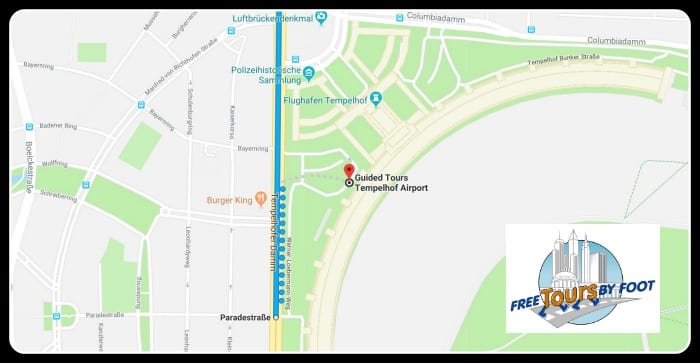
The GAT Terminal entrance is approximately a 3-min walk (250m) from the Paradestrasse U-Bahn Station.
Please read our guide to using Berlin's public transportation systems.
If you are considering purchasing the Berlin Welcome Card, then be aware that your transit ticket is already included at no extra charge.
Additionally, you get a 25% discount on tours of the airport.
NEARBY ATTRACTIONS
If you are coming to take an English tour, then you will have time both before and after your tours to sightsee and eat.
Most visitors will access the airport via the U6 subway line. This line also services many top Berlin tourist attractions, including the following:
Actually, you can easily visit many sights listed on our self-guided tour of Berlin's main sights.
For food, you could visit the Mall of Berlin.
Alternatively, you can use the morning to learn about a slightly off-the-beaten-path neighborhood of Kreuzberg and plan to have lunch in Bergmannkiez, which is a roughly 10-min walk from the airport. (more information)
GUIDED TOURS
The Legend of Tempelhof
This tour is offered daily (except on Tuesdays) @ 13:30 (1:30 pm).
The tours last for 2 hours and cover the general history of the airport.
We detail what you will see on this tour in our "What You Will See" section below.
- €16.50 - Adult | €11 - Student | €11 - Children (6-14)
- @13:30 (1:30 pm) on Wednesdays and then from Friday through Sunday.
- There is a €1.50 charge for advanced booking.
- Get ticket information here.
This same tour is also offered in German
- €16.50 - Adult | €11 - Student | €11 - Children (6-14)
- @16:00 (4 pm) Mondays through Friday
- @13:00 (1 pm) on Fridays
- @12:00 pm and 15:00 (3 pm) on Saturdays and Sundays
- Get ticket information here.
HIGHLIGHTS OF THE TOUR
This is a description of the experience of the author.
According to Tempelhof's website, tours can be altered with little notice due to construction or events taking place at the airport.
The tour begins just outside the visitor center entrance where you will get a brief overview and history of the airport.
One of the most interesting parts of the tour is when you are led out onto the tarmac. It's been just a decade since the last passengers walked the same path that you did.
It's just outside that you really get a sense of the enormous size of the airport.

From one end of the terminal to the other measures 1.3 km (almost 1 mile) and the airport covers a whopping 4 million sq. meters (roughly 43 million sq. ft).
Our tour guide told us that the airport is roughly 2x the size of the city-state of Monaco.
As of 2024, parts of the airport house refugees, mostly Ukrainian. Understandably, they are not part of this tour.
You are brought outside mainly for one reason, to get an up-close view of a Candy Bomber, a Douglas C-54 Skymaster, one of the star aircraft of the Berlin Airlift.
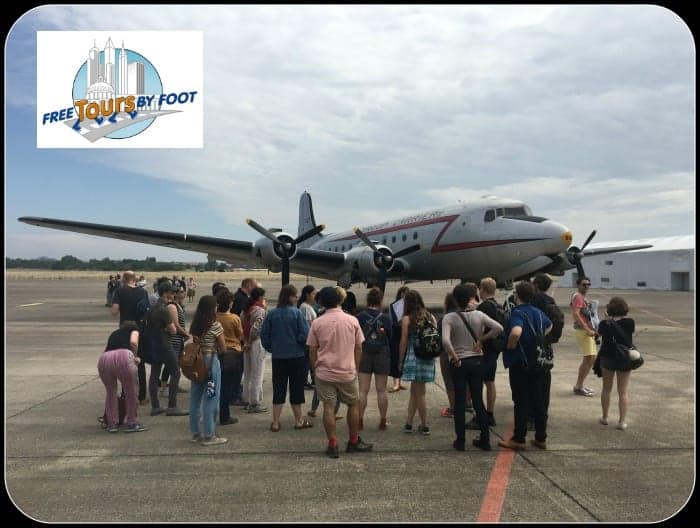
During the Berlin Airlift, the U.S. Airforce, alongside British Commonwealth aircraft, flew over 200,000 missions delivering food and supplies to West Berliners between June 1948 and September 1949.
So many flights came and went that at one point, we were told, that a plane landed here every 90 seconds all day and all night.
Several dozen American and British airmen, as well as roughly 30 German civilians, died as a result of plane crashes during the airlift.
There is a memorial to those who died outside of the airport (we mention this below).
You will also walk through the main terminal of the building, where you will see the old baggage claim carousel and the check-in desks.

It was odd to discover that the Nazis didn't use Tempelhof as an airport during WW2, rather they produced warplanes and ammunition here.
Due to damage during the war, much of this interior was rebuilt in the 1950s and '60s.
Our tour then proceeded to the deeper recesses of the airport, where we were led to view several bunkers, or what in German is called air protection rooms.
This is where local residents and factory workers and their families could go to protect themselves from a gas attack.
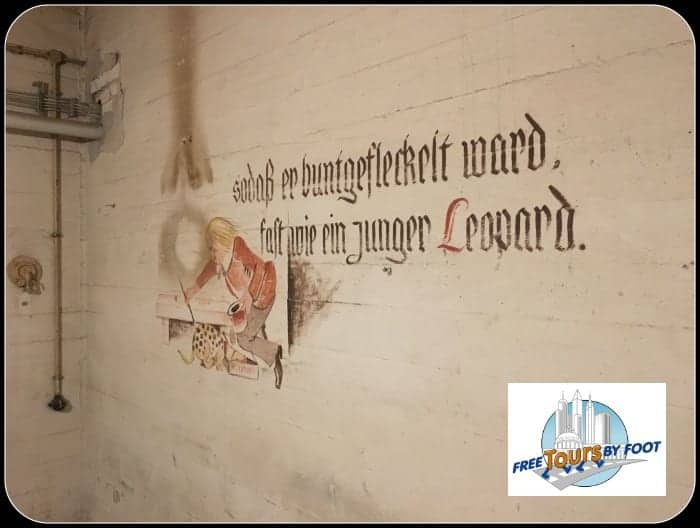
In many of these bunkers, you will find artwork from the children's books of Wilhelm Busch.
These were drawn on the walls to help provide a sense of comfort for the children trapped inside during the bombing raids and street fighting.
Several of the civilians hiding here in the airport's underground were killed by Soviet forces in the closing days of WW2, who mistook the civilians for soldiers or Nazi loyalists.
From the air-raid shelters, we then proceeded to the underground baggage center.
Another interesting stop on the tour is a visit to parts of the airport used by the Americans as part of their Air Force base.
You visit the airmen's lounge, including a bar, but also a basketball court.

The Americans were stationed at Tempelhof Airport from the end of WW2 until January of 1993.
The U.S. Army aviation forces were deactivated the very next year, ending an era of U.S. occupation in West Berlin.
Another interesting highlight of the tour is the visit to the airport roof, where you have a great view of the city, as well as, Tempelhof Feld (the runways).
Today, Tempelhof Feld is a large recreational park where you will see bikers, skateboarding windsurfers, and people enjoying picnics on nice days.
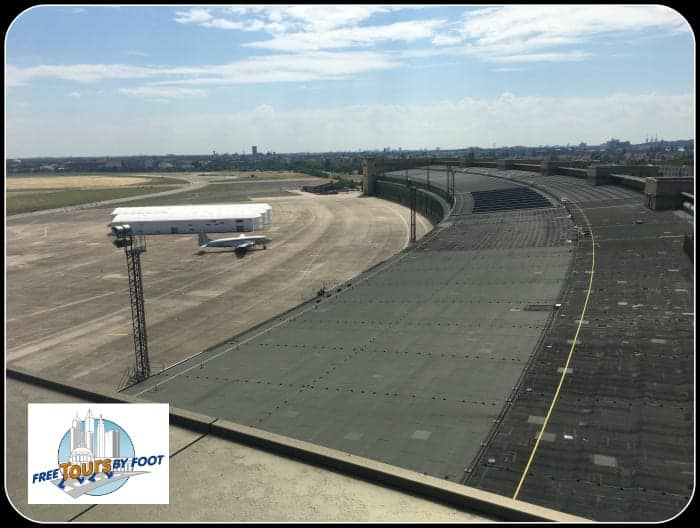
The Nazi government intended the airport to be a military parade grounds and designed the roofs of the airport to hold up to 70 thousand spectators.
They also planned to build embankments opposite the stands to accommodate an additional 40 thousand viewers.
And it's from up here that you can start to really understand the role that the airport was to play in the architecture of Germania.
Lastly, we also visited the Great Hall, which today is stripped of its marble.
This was intended to be a reception hall and the gateway for arriving passengers to enter the new capital city, Germania.
However, it was never fully finished, and its marble was used to make repairs after a bombing at the airport.
There are 2 additional related items to mention that are not on the tour per see, but you are likely to see nonetheless.
The first is an eagles head, which was the symbol of the Nazis that they installed on top of the airport.

Since the eagle is also the national bird of the United States, the head was taken off, painted white (for a bald eagle), and left on the building.
Today, just the head can be seen mounted just outside the doors to the main terminal, which is where your tour officially ends.
Lastly, be sure to consider visiting the Berlin Airlift Monument, which is dedicated to the military personnel who lost their lives during this famous operation.
It is located in the Platz der Luftbruecke and the U-6 Station bearing the same name (map).
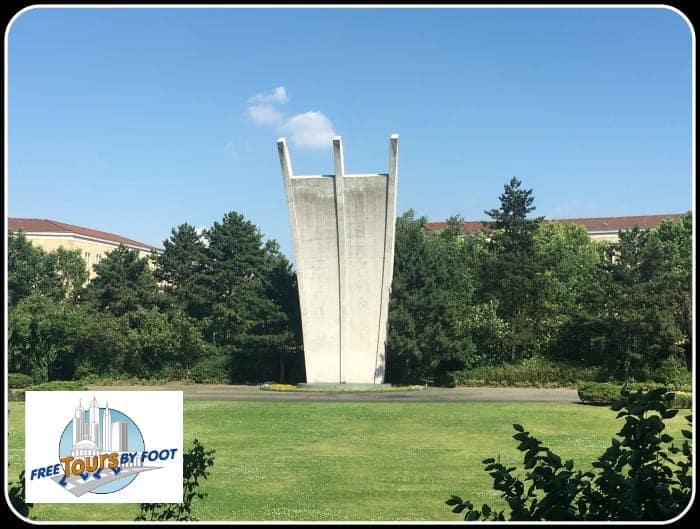
A 20 meters (65-foot) tall concrete sculpture commemorating the airlift.
It consists of 3 prongs, one for each of the air corridors that were opened during the operation, and the names of the roughly 70 servicemen, who lost their lives during the airlift.
That's it. Be sure to check out our free tours of Berlin.
Related Posts




